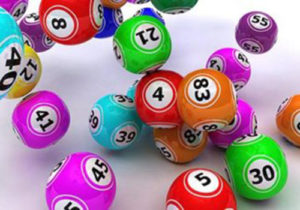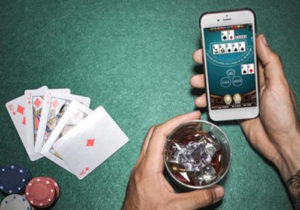Online and land-based casino fans are always on the lookout for a way to get an edge over the house when it comes to gambling. While casino games like slots and roulette are definitely skewed in the casino’s favour, other games like blackjack do give the player a far more realistic chance of making some cash.
But even with these games, the house edge still favours the casino. So how do players do that little bit more to tilt the odds in their favour? Obviously, you can’t cheat, not just because the consequences of cheating a casino could be dire for your health or your criminal record but because the games and casinos are actively set up to identify and nullify any cheaters. You can’t rely solely on luck. So how do you get that edge?
For blackjack players the answer is, quite simply, to learn the skills of card counting.
Card counting is a strategy and system that pro blackjack players use to maximise their betting and their potential wins.
It’s a system whereby each card is given a value and the player calculates the combined values together with how many decks of cards are in play and how many cards have already been dealt to give themselves a better probability of getting a win.
Absolutely not. It is just a way of increasing your chances. However, casinos do not like card counters. They do not look kindly on players who use the system to their advantage and, while it’s unlikely that you will face any serious consequences, if you are caught you will probably be asked to leave the casino and not come back.
There are a number of different strategies but the most basic, and most popular, is the Hi-Lo strategy.
The Hi-Lo strategy is quite quick to learn and doesn’t need too much of a mathematical brain to master. Having said that, make sure you do all the calculations in your head and silently so you don’t give your game away!
There are 4 steps to the Hi-Lo card counting strategy:
In Hi-Lo, each card is given a value:
As each card is dealt, add 1, subtract 1 or do nothing depending on the card dealt.
As each card is dealt, we update our ‘Running Count’ accordingly.
Example 1 (3 players plus dealer):
Hand 1: 4, 8
4 = +1, 8 = 0.
Hand 2: 10, Q
10 = -1, Q = -1.
Hand 3: A, 3
A = -1, 3 = +1.
Dealer: 5
5 = +1
Our ‘Running Count’ is 0 (zero) (+1, 0, -1, +1, -1, -1, +1 = 0)
Example 2 (3 players plus dealer):
Hand 1: 7, 2, 10
7 = 0, 2 = +1, 10 = -1
Hand 2: K, 5, 6
K = -1, 5 = +1, 6 = +1
Hand 3: A, 3
A = -1, 3 = +1
Dealer: 8, 6, J (bust)
8 = 0, 6 = +1, J = -1
Our ‘Running Count’ is +1 (0, +1, -1, -1, +1, +1, -1, +1, 0, +1, -1 = 1).
If these were two rounds played in a game, our total ‘Running Count’ would be +1 (round 1 running count plus round 2 running count: 0, +1 = +1).
If you are playing with a single deck of cards, this ‘Running Count’ will give you an indication of the value of the remaining cards in the deck before it is shuffled. The higher the positive number the more low-value cards remaining, the lower the negative number, the more high-value cards remaining.
In general: bet more after positive counts, bet less on negative counts.
(Positive counts mean there are more high value cards still in the deck, negative counts mean there are more low value cards remaining in the deck).
Casinos know that card counters are very prevalent and so they add more than one deck of cards to the table – sometimes up to 5 decks can be used and shuffled regularly.
To get your card counting up to par, you will need to start a ‘True Count’.
A ‘True Count’ is a count per deck when there are multiple decks in play. This is where the math starts becoming a little tougher. Having a high positive number on your running count with one deck is very different to having a high positive running count when there are multiple decks.
The ‘True Count’ is the ‘Running Count’ divided by the number of decks remaining in play.
True Count = Running Count ÷ Decks remaining
Example:
If our ‘Running Count’ is +10 and we have 5 decks remaining, our ‘True Count’ is +2. (+10 ÷ 5 = +2).
Or
Example:
If our ‘Running Count’ is -8 and we have 2 decks remaining our ‘True Count’ is -4 (-8 ÷ 2 = -4).
Not even close! One of the most important things to learn in any casino game, and especially in blackjack, is how to manage your bankroll. Card counting does not guarantee a win or a blackjack, all it does is give you a better understanding (and a bit of an edge) into how to place your bet (bet high or bet low).
Having a responsible gambling attitude and a good handle on managing your betting and money is just as important as having a strategy.
Hi-Lo is just one of many card counting techniques out there. The CasinoPlay crew use Hi-Lo to illustrate card counting because it’s the easiest to understand and practice.
Omega II (developed by Bryce Carlson in 1992) is a more sophisticated strategy that uses similar values too Hi-Lo but adds a bit more complication to which cards have what value:
Developed by Stanford Wong, Wong Halves bring fractions into the equation:
There is only one huge thing to keep in mind when it comes to card counting: CASINOS DO NOT LIKE IT!
If you feel that card counting will give you an edge, please, for the love of all that is gambling: practice, practice, practice! Do it discreetly. Do it well. Do it without being obvious or you will be caught.
Only if you are playing Live Dealer blackjack. Video blackjack uses a Random Number Generator which means every hand is effectively dealt from a newly shuffled deck. Not only does this make card counting a massive waste of time, it will probably cause you to have an aneurism as you try to keep all the numbers going in your head.

Guide to Keno Guide to Keno Bets are down, the ball is released, and players wait with bated breath, mesmerised by the spinning sound and

Guide to video poker Guide to video poker There are two kinds of poker players in this world. First, there’s the kind that loves the
| Cookie | Duration | Description |
|---|---|---|
| cookielawinfo-checkbox-analytics | 11 months | This cookie is set by GDPR Cookie Consent plugin. The cookie is used to store the user consent for the cookies in the category "Analytics". |
| cookielawinfo-checkbox-functional | 11 months | The cookie is set by GDPR cookie consent to record the user consent for the cookies in the category "Functional". |
| cookielawinfo-checkbox-necessary | 11 months | This cookie is set by GDPR Cookie Consent plugin. The cookies is used to store the user consent for the cookies in the category "Necessary". |
| cookielawinfo-checkbox-others | 11 months | This cookie is set by GDPR Cookie Consent plugin. The cookie is used to store the user consent for the cookies in the category "Other. |
| cookielawinfo-checkbox-performance | 11 months | This cookie is set by GDPR Cookie Consent plugin. The cookie is used to store the user consent for the cookies in the category "Performance". |
| viewed_cookie_policy | 11 months | The cookie is set by the GDPR Cookie Consent plugin and is used to store whether or not user has consented to the use of cookies. It does not store any personal data. |